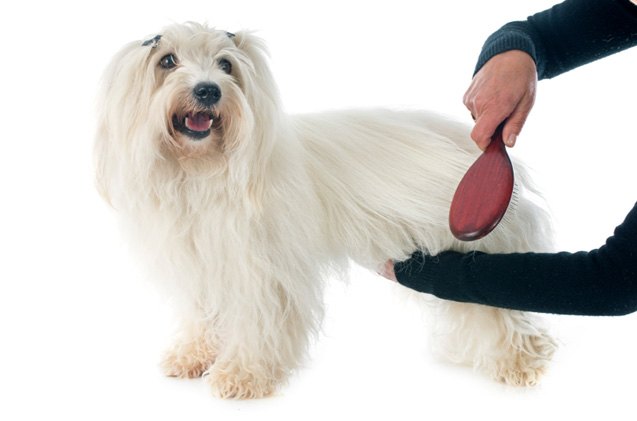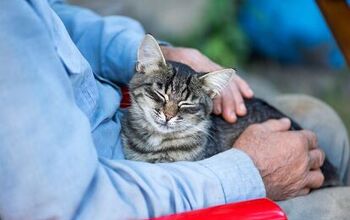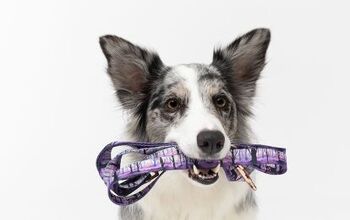Shaggy, smooth, brown, white, or multi-colored – dog coats come in all shapes and forms. The coat is what gives each dog a distinct appearance and a unique identity. And, it goes without saying, this coat needs to be kept pretty and pristine. And that is where you come into the story. As a diligent and responsible owner, you will have to regularly groom your pet’s coat, keeping it tidy and clean. Some dogs, however, can’t be groomed with a simple shave or a haircut. Instead, their coats need hand stripping. So what is this grooming method and which dogs need it? Well, that’s why you’re here, isn’t it? Read on as we learn all about hand stripping. When it comes to keeping your dog’s skin and coat healthy the best thing you can do is groom him on a regular basis. It’s kind of obvious, but it’s true. For some dogs, regular grooming means little more than brushing a few times a week. For other dogs, however, grooming is much more complicated and taxing. Some dogs have a coat that requires a specific grooming method called hand stripping. This is a complicated process and one that isn’t necessarily something that every pet owner can master (hey, that’s what professional groomers are for, right?). So, what is hand stripping? Can you do it yourself if your dog needs it? Spoiler alert: With the right preparation and training, of course you can. All of the answers are below. So keep your eyes glued to this page and scroll away to learn more.This is a sponsored placementCertain dog breeds require a special grooming routine, such as hand stripping, to keep their coat in top shape. However, hand stripping can be tricky if you’re new to it, and many pet owners opt for going to a professional instead. Luckily, pet care plans such as Vital Care can help you keep grooming costs down to a minimum. Petco’s Vital Care offers you an affordable solution to take care of your pet’s routine wellness needs. In addition to covering the costs of unlimited preventative vet exams, this plan also provides unlimited 30% discounts on full-grooming services and monthly rewards that can be used to buy food, toys, and more. Unlike traditional pet insurance plans, this pet care program helps you reduce the chances of health issues occurring in the first place, rather than treating them after the fact. Their complete wellness care makes sure your pet is being taken care of, head to tail, with regular checkups and grooming. Easy to sign up for and economical, this pet care plan will make sure your dog gets only the best care even when you’re on a strict budget. LEARN MORE HEREWhat is Hand Stripping? The process is somewhat given away by its name – stripping loose hair by hand. But it is not all that simple. Hand stripping is a type of grooming method that dog owners use to remove excess hair from their dog’s coat. The most common method of dog grooming is clipping, this method involves the use of a pair of electric clippers which cut or shave the top layer of hair on a dog’s coat. The difference between clipping and hand-stripping is that not only is hand-stripping done by hand, but it removes coat from the root (not just the top layer) so a new coat is able to grow in. Each time you clip a dog’s coat instead of hand stripping, you are just taking off the top layer of dead fur rather than removing it from the roots. As a result, the coat may become duller in texture and color with each clipping, which is why many people consider hand stripping to be preferable. Is it an ideal solution for every dog? Of course not, it all depends on the dog and the coat. For some dogs, it’s not just the best solution, but the only one as well.What Dog Breeds Require Hand Stripping?When it comes to hand stripping, it is more about the type of coat than the breed of dog. Of course, certain dog breeds have certain types of coats, so obviously you can identify some breeds that require hand stripping based on their breed alone. That’s just not a universal truth. The type of coat that requires hand stripping produces two types of hair: the undercoat (which is soft and dense) and the top coat (which is longer and wiry in texture). The process of hand-stripping involves removing the dead hairs from the top coat by pulling them out from the roots rather than simply trimming them down. By removing the hairs entirely, you will create room for the new coat to grow in. Dogs with wiry coats go through a specific growing cycle in which the hair becomes thicker and darker as it grows. If you do not remove the dead hair from the top coat, it will have a negative impact on the overall appearance of the coat. That’s why this process is so important for dogs that have this very specific style of coat that is tricky to work with.Related: Understanding Your Dog’s Special Grooming NeedsSome of the breeds that have a coat that requires hand stripping include (but are not limited to): Airedale Terrier Bouvier de Flanders Affenpinscher Cairn Terrier Wire Fox Terrier Jack Russel Terrier German Wirehaired Pointer Schnauzer Wirehaired Pointing Griffon Wirehaired DachshundTips for Hand Stripping Your Dog’s CoatHand stripping a dog’s coat can be tricky if you don’t know how to do it. So, before trying it for yourself, it is recommended that you have a professional groomer show you the proper method. To hand strip your dog’s coat, you should place him on a stable surface (like a counter or grooming table). It may also help if you have someone to hold your dog in place if he is nervous about being up high. Take a few strands of hair and grip it between your thumb and forefinger, then pull gently in the direction of hair growth to remove the hair. If your dog’s coat is ready to be stripped, the hair will come out easily and it will not cause your dog any pain. While it may seem strange to quite literally pull your dog’s hair out and you may worry about causing him distress, this process is completely natural and painless provided that it is happening at the right time. For example, you may need to strip your dog’s coat more frequently in the summer than in the winter and it may be best to strip it in sections over a period of several weeks rather than doing it all at once. Much of this will depend on your specific dog and his specific coat. There are few hard and fast rules here, so you will need to monitor his coat and act accordingly.Some Additional Hand Stripping Info and Helpful TipsWhen talking about hand stripping, pet owners tend to have a lot of questions at the beginning, especially if they are new to this type of grooming and they are hoping to do it themselves rather than simply going to a groomer to get the job done. We get it. This can all seem a little intimidating. There’s good reason for that. Hand stripping needs to be handled with care to work effectively. However, if you go into the process knowing what you are doing and what to expect, it doesn’t have to be an anxiety-inducing task. Having questions and concerns is important. That’s why we are here to alleviate your concerns and provide some answers.For example, one of the most commonly asked questions about hand stripping is how often it needs to be done in order to keep a dog’s coat beautiful and healthy. Generally, you can hand strip your dog’s coat every four to six weeks, but if your pet’s coat grows rather slowly, you can probably wait as long as eight weeks before hand stripping the coat again. It all depends on the dog and his coat. Essentially you want to give the coat enough time to renew itself, and you want to let the layers grow in so that they are uniform. While that may sound difficult to identify, after a few rounds you’ll start to notice fairly easily when your dog’s coat is ready for another round of hand stripping.Other people ask about bathing their dogs prior to hand stripping the coat. Simply put, it isn’t a good idea to bathe your pooch before you hand strip. The bath will end up softening your pet’s skin and fur, and when that happens, the coat will become more challenging to hand strip. Plus, it will be uncomfortable for your poor dog. You want their hair to be as dry and brittle as possible before hand stripping. This will make the process easier for you and less uncomfortable for your dog. Dry coats are already ideal for hand stripping – the hairs are coarse and loose enough, making them easy to come out in clumps. Wet hair, however, is bunched together, slippery, and can be a nightmare to pull out. So best not do it that way. After you have hand stripped your dog, if you want his coat to be on the shorter side, you can scissor or clip the fur down further. However, some grooming experts don’t bother with this step, as it could end up changing the flow and the texture of the animal’s coat, thus making it harder for the coat to be able to do things like repel water and dirt. It’s probably healthiest to let the hair grow in naturally, however, some people are more interested in styling their dog than grooming. In that case, clip away. Just do so with caution.Another question often asked about hand stripping a dog’s coat is in regards to the steps involved. Generally, you can divide the hand stripping into three different sections. The first section would be the dog’s jaw line, ears, cheeks, and head, as well as the area down the neck. The section section would be the dog’s sides and his back. Finally, the third section would be the legs, eyebrows, and beard. Sometimes it might be easier for you and your dog to divide the hand stripping process across three separate sessions that focus on each of these three separate sections. Other times, it might be best to do it all in one epic hand stripping session. Either way, it’s best to divide the job into those three separate sections to make the process a little easier and more organization. However, it might not always be universal. A lot depends on the size and breed of the dog, the thickness of the coat, and the position they are in. Certain breeds have a more prominent neckline, while others have it seemingly connected to the torso (Dachshund for example). This means that sometimes, only two general steps might be involved, and not three.Remember, when hand stripping the correct way, you need to pull the hair out in the direction of its growth. If you are hand stripping a wire coated canine, he will have releasing hair follicles that will allow the hair to come out surprisingly easily. It is also worth noting that hand stripping can be time consuming, not only while you are learning how to it, but also once you have the routine down. For this reason, you might decide that rather than doing it all on your own at home, you will let your dog be hand stripped by a professional groomer who has loads of experience and can make the grooming session as quick and comfortable as possible for your pooch. However, when it comes to deciding whether you want to take a DIY approach to hand stripping, it really is up to you and your dog.Ready to Give Hand Stripping a Try? Just Be PatientGrooming is an essential part of being a dog owner and it is a task that can be challenging with certain breeds. Sometimes, it takes a while to master, and can be a daily task with certain dog breeds. With a little training, you can take care of most of your dog’s hand stripping needs yourself to keep him looking and feeling his best. This is an important responsibility as a dog owner, but also a tricky process. There’s no shame in leaving this grooming in the hands of a professional if it seems too daunting. However, if you wish to hand strip your dog’s coat yourself, hopefully we’ve demystified the process enough to make it seem less intimidating.Just remember to be patient and consistent in your training. The learning process for hand stripping shouldn’t be too long. After all, it is all about learning the right motions and getting the hang of it. With just a few practice runs you can certainly master this grooming method and continue to maintain the tidy and normal look for your pet. And learning it can go into your favor as well – regular visits to the groomer can definitely make a big dent in your budget. So think about that as well! Of course, this is not a call to neglect your pet’s basic needs in terms of hygiene and appearance. If you see that hand stripping simply does not work for you, then by all means, visit the grooming salon. Never overlook proper hygiene. A neglected dog coat is a perfect platform for diseases and all sorts of nuisances. Lack of grooming, brushing, and bathing can lead to overgrown hairs, mats, clumps, and accumulated dirt and mud and feces. Next up are fleas, ticks, parasites, and all sorts of nasty critters that can seriously impact your dog’s health. Then there is the bad smell. A doggo whose hygiene has been neglected is bound to be stinky. And in time this can prove to be a big issue, both indoors and outdoors. So, as you can see, it really is criminal to neglect the basic needs of your pet. Don’t be an irresponsible owner, and provide your loved pet with the care they need. Whether that is ordinary brushing, grooming, or hand stripping. Do you have any tips for hand stripping your dog at home? If so, we’d love to hear them. Please leave your tips in the comments below.

























